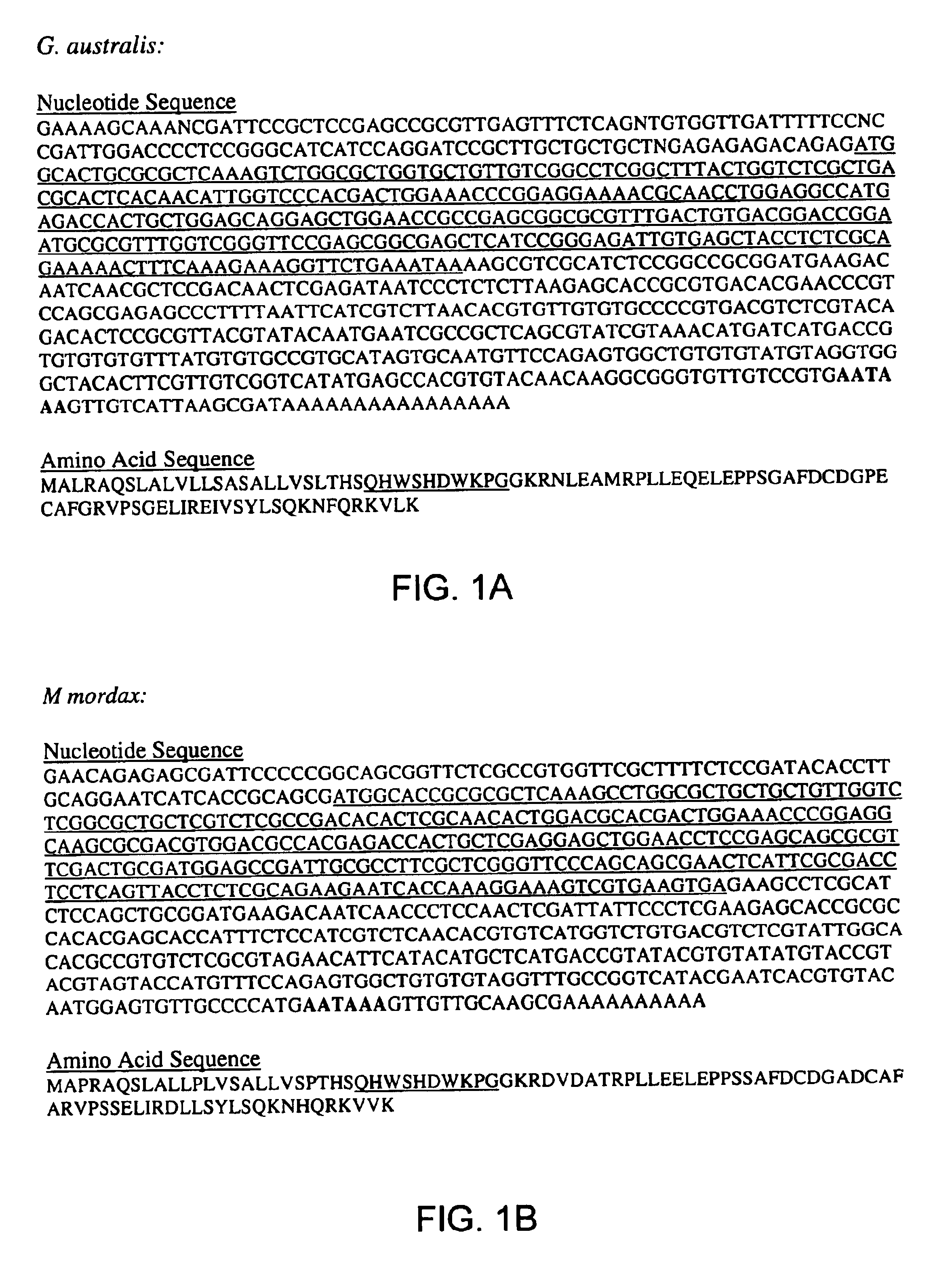Polynucleotides encoding lamprey GnRH-III
a technology of gnrh and polynucleotides, which is applied in the field of new peptide hormones, can solve the problems of limited success in manipulating the reproductive cycle and rearing of the reared fish, and many economically important fish do not reproduce spontaneously in captivity, and achieves the effect of easy, less expensive and safer methods and systems for controlling and/or regulating
- Summary
- Abstract
- Description
- Claims
- Application Information
AI Technical Summary
Benefits of technology
Problems solved by technology
Method used
Image
Examples
Embodiment Construction
[0051]This invention relates to a form of GnRH, particularly lamprey GnRH-III, and its novel cDNA in four species of three families of lamprey. The invention is based on Applicant's isolation and sequencing of cDNA for lamprey GnRH-III from members of the three families of lamprey in order to assess their phylogenetic relationship and provide insight into the evolution of neuroendocrine hormones, specifically the evolution of the GnRH decapeptide, and its function and regulation in lamprey and other animals.
[0052]The DNA molecules of the present invention and the endogenous GnRH peptides encoded thereby as described in FIGS. 1a-d, analogs and / or fragments thereof, and / or any combination of such endogenous and / or analog peptides and / or fragments thereof, including the signal and GAP peptides and / or analogs and / or fragments thereof (hereinafter referred to as “active compound”) may be used to induce or inhibit gonadal development, and to induce and synchronize ovulation, spawning, spe...
PUM
 Login to View More
Login to View More Abstract
Description
Claims
Application Information
 Login to View More
Login to View More - R&D
- Intellectual Property
- Life Sciences
- Materials
- Tech Scout
- Unparalleled Data Quality
- Higher Quality Content
- 60% Fewer Hallucinations
Browse by: Latest US Patents, China's latest patents, Technical Efficacy Thesaurus, Application Domain, Technology Topic, Popular Technical Reports.
© 2025 PatSnap. All rights reserved.Legal|Privacy policy|Modern Slavery Act Transparency Statement|Sitemap|About US| Contact US: help@patsnap.com



